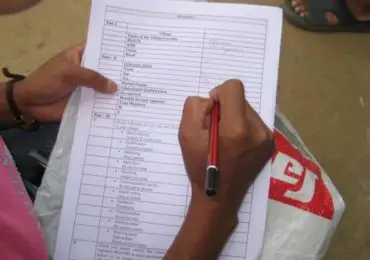What is data collection and why it is performed?
Data collection is basically the process of collecting data from different sources under any specified work environment to get answers to some predefined questions trying to gather information about some certain issue. Data is collected for various purposes like educational & research purposes, business research, marketing purpose and almost everything you can think of.
There is a growing competition and need for companies and institutions to collect and analyse data. This is done by various means depending on the nature and type of data. Once the need of data collection and its format is decided, process of data collection starts. This is divided into two parts on the basis of source for the collected data:
- Primary Data Collection – Data is collected by the surveyor itself and is usually done for the first time.
- Secondary Data Collection – Data already available in forms of reports and documents. This data is available as someone else collected this data.
Primary data collection is required in many cases especially when the need for data is company/institution specific. For example students from an educational institution conducting surveys for report making are required to conduct surveys. This forms a part of primary data collection method. Another example can be a company conducting user satisfaction survey for its product or service. Widely known census surveys also forms a part of primary data collection. There are several ways to collect data which we are going to list here. Primary data collection also takes place for quality or comparison purpose.
Once the data is collected it requires to be processed before it can be put to any use. This process becomes easy if the person dealing with data knows about the various steps and stages involved in the processes. Some of the related topics about data collection include:
Methods of data collection
Types of data processing
Data mining
Data processing
Data Processing Methods
Data processing cycle
Data management best practices
Data presentation and analysis
Information processing cycle
Importance of data processing
Different Data Collection Techniques (both primary and secondary) include:
| Technique | Types & key information |
| Interview |
|
| Questionnaires and Surveys |
|
| Observations |
|
| Focus Groups |
|
| Ethnographies, Oral History and Case studies |
|
| Documents and Records |
|
Various Methods to collect primary data
Interviews
Interviews are known as the oldest and most effective data collection method which can be performed personally or by sending email to the respondent. It is effective when someone takes interview to a group of people one by one because he can also gather an additional response by that person’s facial expressions which is quite important. Through email, chances are there that the respondent has changed his reply due to some reason or he may take an extra amount of time to compose his answer which definitely can give a twist to his reply. That is why interviews are preferred to program individually and personally. In other cases, if you have a large number of people which you are going to inquire, you can forward a questionnaire to them via email and set the time limit to respond like 24-48 hours.

Projective technique
In projective techniques, the respondents are provided with a disclosed subject or an incomplete set of information which they have to complete it according to their personal point of view. For example, they are given any picture which everyone has to describe in his own way or they are called to enact a role play for a settled situation and they are asked to respond if the situation was real. Another way to perform projective technique is to provide the respondents an incomplete cartoon to complete or a set of random words to arrange how they like it. All of these techniques are used to collect their responses, expressions, feelings, motivations, opinion and attitude to reach the most common response they all have given.
Questionnaire method
Questionnaire method is effective when you have a short time to collect information from a large number of respondents. A set of questions either open ended or closed ended framed with keeping in mind the characteristics of good questionnaire makes it very effective. These questions helps in the problem identification and to record people’s responses about the focus problem. Get that printed and distributed among a large group of people. Make sure to print 25-30% more questionnaires than the number of responses you want because you cannot force someone to answer. Possibly some of them will not fill up that questionnaire and in that case, you will not have enough responses to reach to the result.
A group interview system
Another data collection method is to make a group of few people who are directly or indirectly related to the problem which you are going to solve through collected data. One person should administrate that group discussion to put forward questions and record answers from everybody. This method is easy, but it is sometimes not possible to control group members to be strict to that specific discussion so the results and data sometimes are unobvious. Such group discussion can be made successful if the person monitoring that group interview in keen and sharp enough to record every person’s expressions and responses to questions carefully.

Telephonic interview
Another form of personal interviewing is telephonic interview which has been used specifically when the respondents are not available in nearby areas. This sort of interviews is conducted when you have to gather some information from a specific area where you can’t easily reach in the limited time so you call them and ask questions. There are some cons of this system e.g. the interviewer is not able to observe the expression of responding person and secondly, it’s not economical to call every single responder and take 15-20 minutes on call. Still people use this technique specially when it is tough for them to travel and get the responses personally.
There are several other ways as well which are known as secondary data collection methods. To make sure that the responses that are gathered are utilized well to get to a result, you need to pick an expert to perform these techniques. It’s sometimes a game of sharp observation and wise decision which demands a good brain. Another important point is that always make a backup for all these responses and keep it saved to be used in relevant cases.
The most useful, quick and widely used methods for data collection
Depending on the type of data requirements the methods adopted varies. Most of the methods have already been discussed above however you may come up with your own methods which might be a mix of primary and secondary data collection. Few methods might be a even more complex form and the quality of data thus collected needs to be carefully assessed.
Tags: Data, Sampling, Data Collection, research, regression, variables, interview, response, test